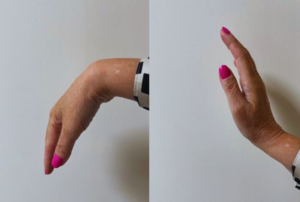
What is Repetitive Strain Injury (RSI)?
Repetitive Strain Injury (RSI) is triggered by repeated use of part of the body, for instance, the wrist, hand, shoulder, elbow, or forearm. Constant repeated movement affects the soft tissue and over time can cause damage to the muscles, tendons, nerves, and joints of the upper body, causing pain, inflammation, and weakness. Repetitive Strain Injury (RSI) can often be prevented with proper care and awareness.
Common Causes of RSI: Identifying Risk Factors
Any task that involves repeating a movement can cause RSI. Many common activities can increase the risk of developing an RSI, such as: Typing, using a computer mouse, blow drying hair, working on an assembly line, using power tools and painting, to name but a few.
Understanding the importance of preventing Repetitive Strain Injury (RSI) is crucial, especially for those engaged in repetitive tasks.
Being aware of Repetitive Strain Injury (RSI) signs can help you manage your health effectively.
And of course, poor posture, a badly set-up workstation, or working in an awkward and uncomfortable position can contribute to developing a repetitive strain injury, as can, not taking breaks throughout the day.
Recognising RSI Symptoms: When Should You Seek Help?
If you notice symptoms of Repetitive Strain Injury (RSI), it’s important to take action early to avoid further complications.

To mitigate the risk of Repetitive Strain Injury (RSI), awareness and proactive measures can make a significant difference.
Symptoms of a repetitive strain tend to develop gradually, starting with a dull ache or pain that subsides when you stop the activity, but gradually they will be constant and may start to affect your ability to perform simple tasks associated with daily living. These symptoms can include pain, tenderness, weakness, tingling and numbness. The longer and more prolonged these symptoms become the more your physical and mental wellbeing can be affected.
Preventing RSI: Practical Steps for a Pain-Free Life
There are some simple steps to decrease your risk of developing a Repetitive Strain Injury. The following are a few to try:
Good Posture – maintain good posture whilst at work.
Integrating stretching exercises specifically aimed at preventing Repetitive Strain Injury (RSI) into your routine can enhance your wellbeing.
Including Repetitive Strain Injury (RSI) prevention techniques in your daily life is essential for maintaining hand and wrist health.
Regularly performing exercises to combat Repetitive Strain Injury (RSI) can greatly impact overall hand function.
Regular breaks – take routine short breaks from long repetitive tasks.
Good diet – nourishing your body helps to keep it strong and resilient and aids healing from injury.
Work station set-up – ensure your workstation is set up appropriately for you personally e.g., screen height, chair, footrest etc.
Stretching exercises – performing regular stretching exercises can help to alleviate pain, and tension and relieve soft tissue from continuous strain.
Effective Hand and Wrist Exercises to Prevent RSI
Everyone who performs any sort of repetitive movement with their hands should be performing these exercises to help prevent Repetitive Strain Injury.
Shake it out (up and down)
- Begin with your hands out in front of you and palms facing the floor
- Slowly shake your hands by letting your wrist go limp
- Continue for 10-15 seconds
- Repeat up to three times

Fist to Fan
- Begin with your hands in front of you and palms facing downwards.
- Make a fist with both hands.
- Open the fist halfway, so your finger is bent at the knuckles. Hold for two seconds.
- Open your hands fully, so all five fingers are straight and spread wide apart. Hold for 2 seconds.
- Re-make a fist and repeat the routine.
- Repeat the routine five times.

Thumb Touches
- Hold your hands outwards with your palms facing the ceiling.
- With your right hand, slowly bring your thumb to touch the tip of every finger.
- Repeat on the other hand.
- Return to the starting position.
Basic Wrist Stretches: Relieve Tension and Maintain Flexibility
- Hold your right hand out in front of you with the palm facing upwards.
Understanding how to manage and prevent Repetitive Strain Injury (RSI) is essential for maintaining an active lifestyle.
Our clinics can assist you in addressing concerns related to Repetitive Strain Injury (RSI) and provide tailored solutions.
- Grip all four fingers with your opposing hand.
- Gently pull the fingers down towards the floor
- Hold the stretch for ten seconds, then release the hand back to the starting position.
- Repeat with the left hand, holding for ten seconds.
- Repeat the exercise five times.
Get Expert Help:
Further help and assistance is available through our ROC clinics in Aberdeen and London.
For information or to book an appointment get in touch.